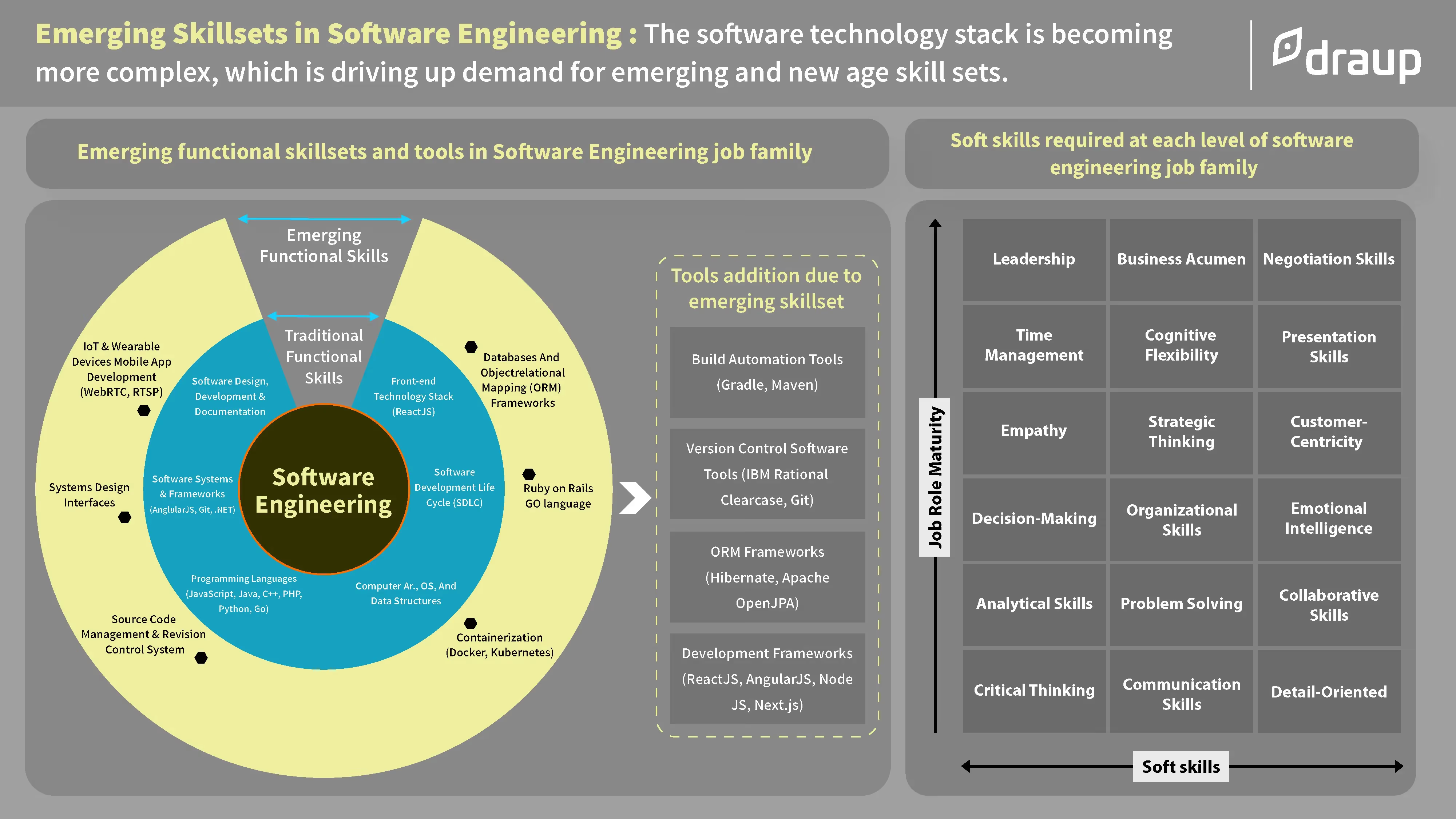Navigating the Talent Crunch: Effective Reskilling Strategies for Software Engineering Talent
Software engineering entails creating experiences that are feature-rich, consumer-grade, secure, and resilient.
The cloud-native era has increased accidental complexity, putting software engineering departments at odds with talent management teams that want to hire cost-effectively.
Hence, it is a critical talent management measure to upskill existing talent.
The Cost of Hiring Software Engineering Talent
Software development involved building applications in a monolithic architecture hosted on a server that was physically accessible.
It has now transitioned to multiple microservices packaged in containers, orchestrated with Kubernetes, and hosted in a distributed cloud environment.
Besides, Agile, DevOps, and CI/CD pipelines are changing software engineering.
These methods emphasize collaboration, rapid iterations, and automation but complicate software development lifecycle coordination, communication, and quality.
The evolving complexity offers exciting opportunities to innovate and create powerful, impactful software solutions, but at a cost.
Today, hiring software engineers is expensive, and it generally takes a company an average of six months to make back the money spent on a new employee.
A bad hire can cost a company up to 300% of the employee’s salary. Companies can lose up to US$ 15,000 or more by hiring an employee who leaves within a year.
The below infographic exhibits emerging and traditional skills for software engineering roles.

The complexity is driving up costs and competition as talent management teams struggle to hire for software engineering roles.
Talent Management Strategies to Build a Software Engineering Workforce
1. Determine in-demand and future skills and competencies: Software engineering leaders can identify aging systems or digital services and predict future needs and probable enhancements.
They can collaborate with talent management, business leaders, product managers, and solution architects to determine the skill sets required for a product/s.
Categorize essential or in-demand skills for the current landscape and emerging skills for the future.
Software engineering leaders must request talent management to create a software engineering skills matrix.
For instance, consider these four aspects:
- Competencies — Design thinking, business acumen, etc.
- Working methodologies — Kanban, Agile, etc.
- Architectures and design – SOA, MASA, cloud-native, data architecture, and user experience.
- Tech skills – Specific programming languages, development platforms, tools, etc
Draup has analyzed 100+ companies to identify emerging and in-demand cloud skills for the target ‘Software Development Engineer’ role. The infographic below showcases these skills.

2. Identify the available maturity of skills and employees with potential: Organizations can leverage internal talent and save on external hiring costs by investing in reskilling and upskilling.
Assess developers’ skills and aptitudes to identify learning and development gaps.
Talent management teams must embrace on-the-job learning to inspire software engineers to improve their skills without supervision.
Make reskilling and upskilling part of the company culture to encourage developers to grow.
3. Inform employees of the benefits of upskilling/reskilling: Talent management leaders should instill employees with a ‘drive to learn’ and encourage them to be independent. Key to talent development are three elements of motivation:
- Autonomy: Let teams decide how to complete tasks and remove barriers to employee advancement.
- Mastery: Appreciate managers and peers for mastering skills.
- Purpose: Ensure that employees associate their work with a sense of purpose.
Talent management teams can utilize the ‘Recruit to Reskill’ strategy to save cost.
The cost of hiring Software Development Engineers (SDE) in Atlanta is USD 158K each. However, after reskilling new QA Engineers for the SDE role, the cost came down to USD 128K each.
The above strategy can save 18% of the talent management cost and provide upskilling-related benefits.
4. Consider a foundational skills level, but plan to upskill with targeted programs: Talent management leaders could hire individuals with base-level proficiency and provide them with immediate learning opportunities.
For instance, talent management leaders can consider technical or customer support staff for software development skills as they understand products and customers.
Incorporating agile learning promotes short skill bursts for adaptability.
Besides, agile learning helps employees develop a growth mindset to apply their knowledge to create value. It promotes collective learning to maximize the organization’s benefits.
5. Create learning opportunities and devote time: When assessing development strategies, consider low-cost, quick-learning opportunities for developers.
Place employees in environments where they can quickly learn and apply new skills. Peer connections, 360-degree feedback, hackathons, innovation labs, and lunch-and-learns can help new hires and veterans share knowledge.
Talent management teams must create time for learning despite a massive backlog of week and cross-functional activities.
They could include classes, instructor-led online coaching, mentoring, new technology proof-of-concept projects, and helping software developers engage with practice communities.
6. Establish mentorship, apprenticeship programs, and collaborations: Creating mentorship and apprenticeship programs to help new employees must be a talent management practice.
Facilitate cost-effective, organization-specific training programs with industry experts so aspiring software engineers can learn from experienced mentors.
Additionally, online learning platforms and resources offer a flexible, cost-effective solution for upskilling and reskilling software engineering talent.
Conclusion
Finally, strengthening company culture must be part of the talent management exercise to complement the reskilling strategies.
- Place a strong diversity, inclusion, and equity (DEI) policy.
- Provide competitive compensation and benefits.
- Establish objectives and performance metrics to determine results and RoI.
- Collect employee and stakeholder feedback to refine reskilling strategies.
Draup helps talent management teams create transformative strategies and anticipate skills for future initiatives. It gives data-supported insights into the global software engineering pool, cost modeling, and reskilling pathways to accelerate enterprise-wide reskilling.
Draup examined cost-effective ways to develop software engineering talent. Its report shows software engineering’s growing complexity and demand for new skills.
It discusses cost-effective reskilling strategies to overcome the budget challenge and U.S. locations to hire and reskill talent with adjacent skills.






.svg)
